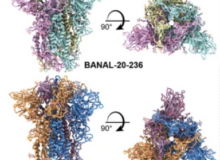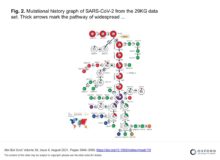Jonathan Latham
Online gene testing company 23andMe last week published its first genetic research study into Parkinson’s Disease. The study was funded by the participants (many of whom are customers of 23andMe), the company itself, and Google-founder Sergei Brin, who is married to 23andMe’s CEO and founder, Anne Wojcicki (1). Wojcicki is also personally subsidising the company and is a co-author on the paper.
23andMe’s study shows that two new genes it has discovered, plus all known existing genes linked to the disease, are not much better than random selection for predicting who will get Parkinson’s Disease.
According to the new research, predictive computer models including all known genes can only account for 6%-7% of the variance of the disease (2). This means that 93-94% of the explanation for differences in people’s likelihood of developing Parkinson’s Disease is missing. Further, most of the missing explanation for these differences in risk is not genetic.
“Most diseases in most people are not predictable from people’s genes,” said Dr Helen Wallace of GeneWatch UK “23andMe should start being more honest with its customers and admit most gene tests that it sells online are meaningless. Both its investors and its customers need to know that genetic predictions will always have fundamental limitations. These findings show that 23andMe’s product can only ever get a little bit less useless as more and more research is done.”
23andMe’s rival company, DeCode Genetics (based in Iceland) went bankrupt in 2009, although it continues to operate as a private company (3). A recent study presented at the European Society of Human Genetics concluded that both companies sell inaccurate predictions of disease risks to their customers (4).
23andMe’s paper includes a new estimate that the heritability of Parkinson’s Disease is 23% (suggesting that 77% of the variance will never be explained by genes, but that missing genes yet to be discovered account for a further 16%). Even if this estimate is correct, it is much less than the calculated heritability of type 1 diabetes, a disease for which scientists have already shown genetic tests have poor predictive power. Even if all potential undiscovered genetic factors are added in this will remain the case (5). The authors of the 23andMe paper therefore predict that even if all the genes they think might exist were found there would be an upper bound on the predictive value which is insufficient to make genetic screening for Parkinson’s Disease risk useful in the general population (6).
(1) The findings, funding and competing interests are reported in the paper: Do et al. (2011) Web-based genome-wide association study identifies two novel loci and a substantial genetic component for Parkinson’s Disease. PLoS Genetics, 7(6), e1002141. On: http://www.plosgenetics.org/article/info:doi/10.1371/journal.pgen.1002141
(2) Sergei Brin himself has a rare gene linked with a rare familial (i.e. largely inherited) form of Parkinson’s Disease which occurs mainly in Jewish families. However, most cases of Parkinson’s disease are not familial.
(3) http://www.independent.co.uk/life-style/health-and-families/health-news/firm-that-led-the-way-in-dna-testing-goes-bust-1822413.html
(4) Direct-To-Consumer Genetic Tests Neither Accurate in Their Predictions nor Beneficial to Individuals, Study Suggests. 31st May 2011. http://www.sciencedaily.com/releases/2011/05/110530190344.htm
(5) Clayton, DG (2009) Prediction and Interaction in Complex Disease Genetics: Experience in Type 1 Diabetes. PLoS Genetics, 5(7): e1000540. On: http://www.plosgenetics.org/article/info:doi/10.1371/journal.pgen.1000540 “Many authors have recently commented on the modest predictive power of the common disease susceptability loci currently emerging. However, here it is suggested that, for most diseases, this would remain the case even if all relevant loci (including rare variants) were ultimately discovered.”
(6) They report an AUC for their own model of 0.55 to 0.6 and an “upper bound on AUC for a genetic risk prediction model of 0.83 to 0.88” (based on finding future genes to explain their calculated heritability). An AUC of 1 implies perfect predictions, an AUC of 0.5 is no better than random guessing. It has been suggested elsewhere that an AUC of 0.75 is needed before testing people with symptoms and an AUC of 0.99 for screening unsymptomatic people in the general population, because of the large numbers of false positives and false negatives that occur with a lower AUC (i.e. people told they are at high risk when they are not, or told they are at low risk when they are not).



